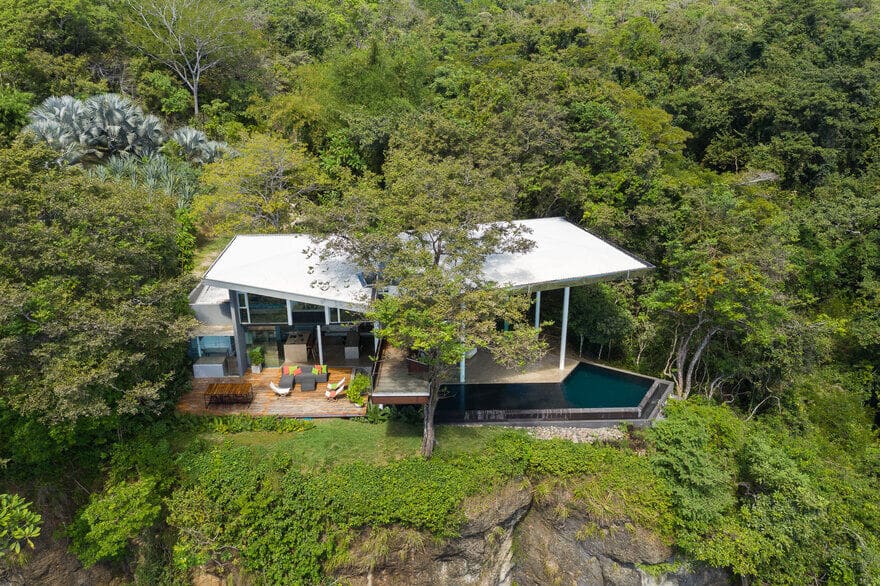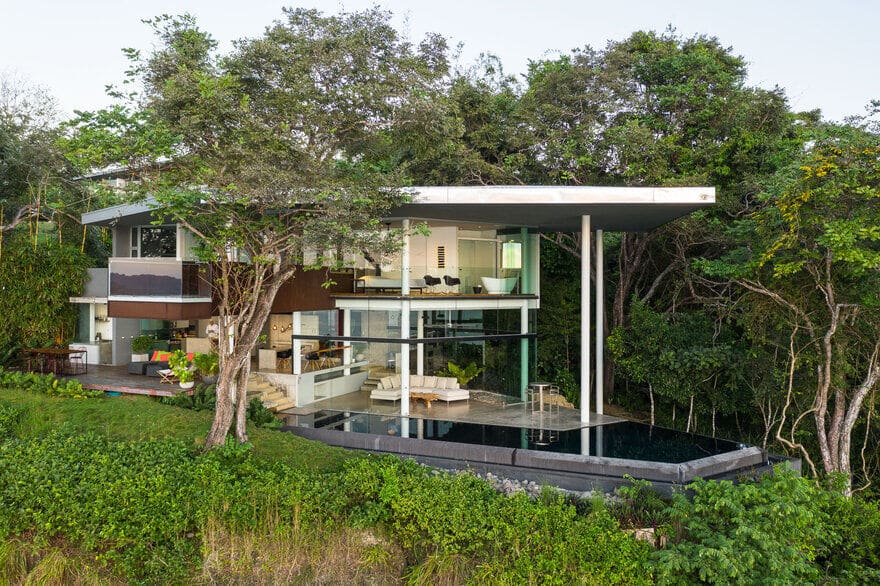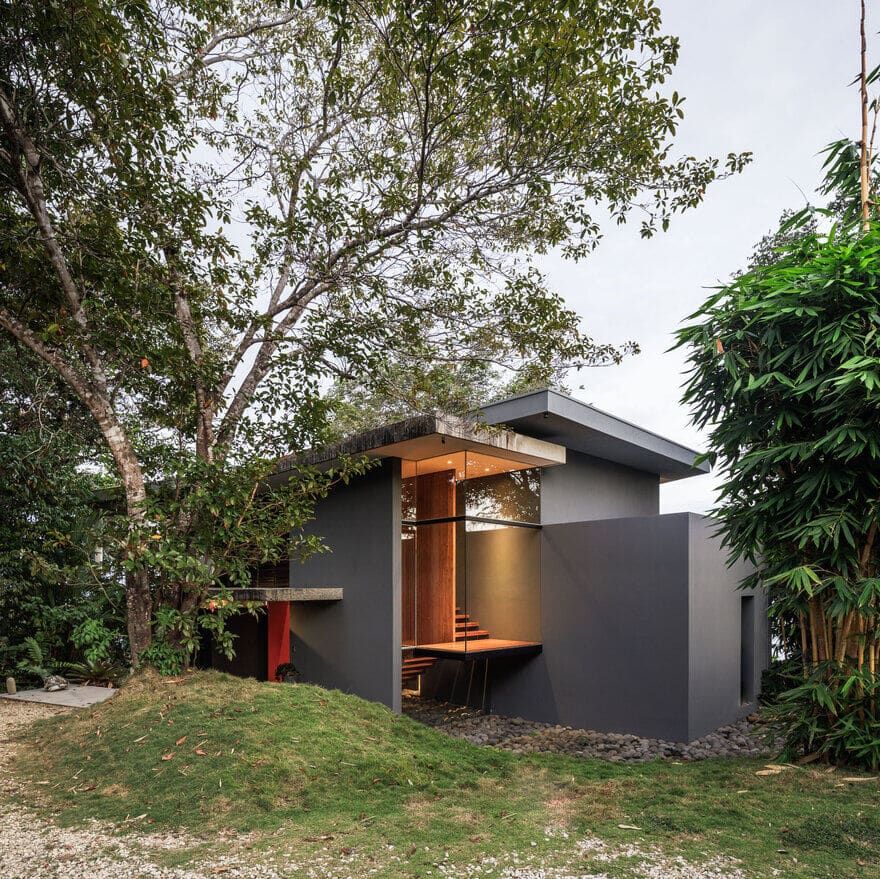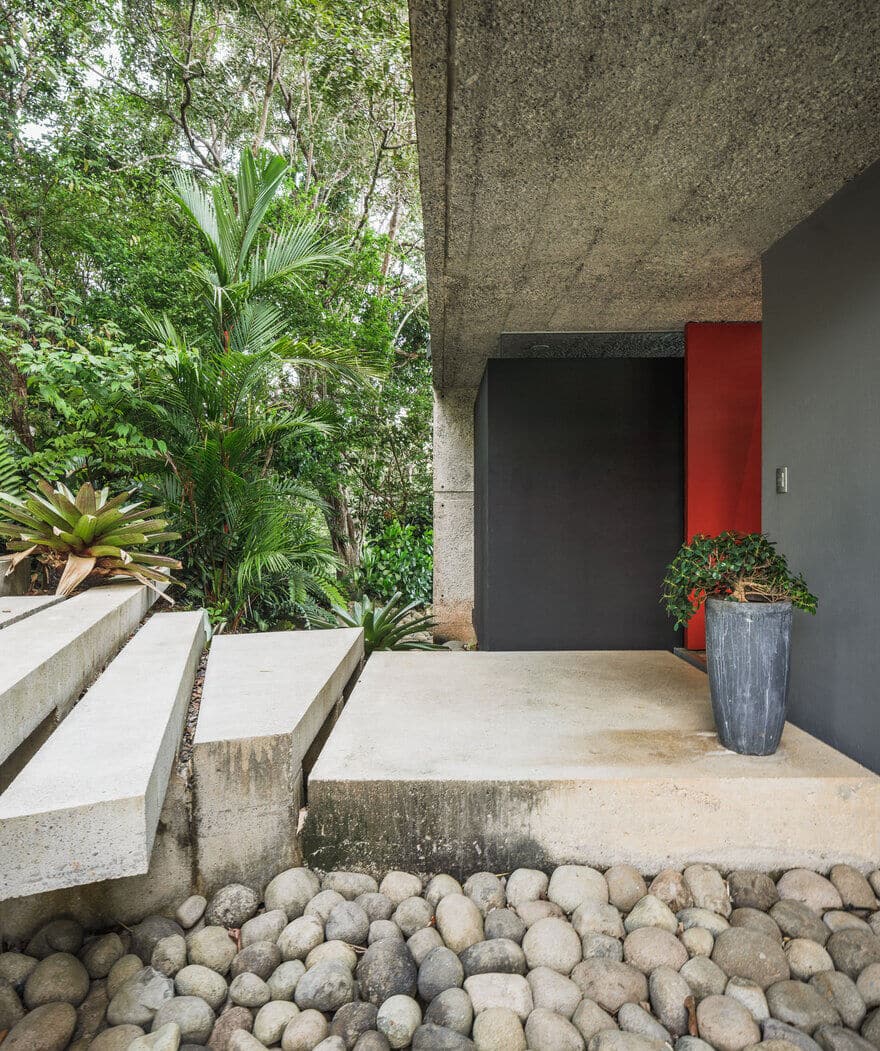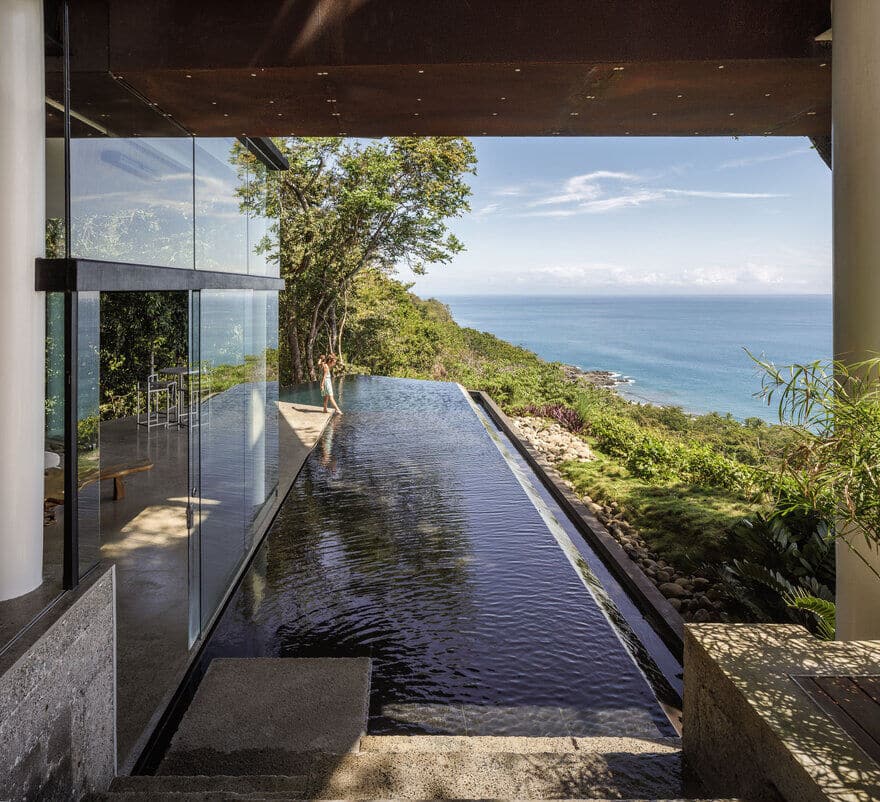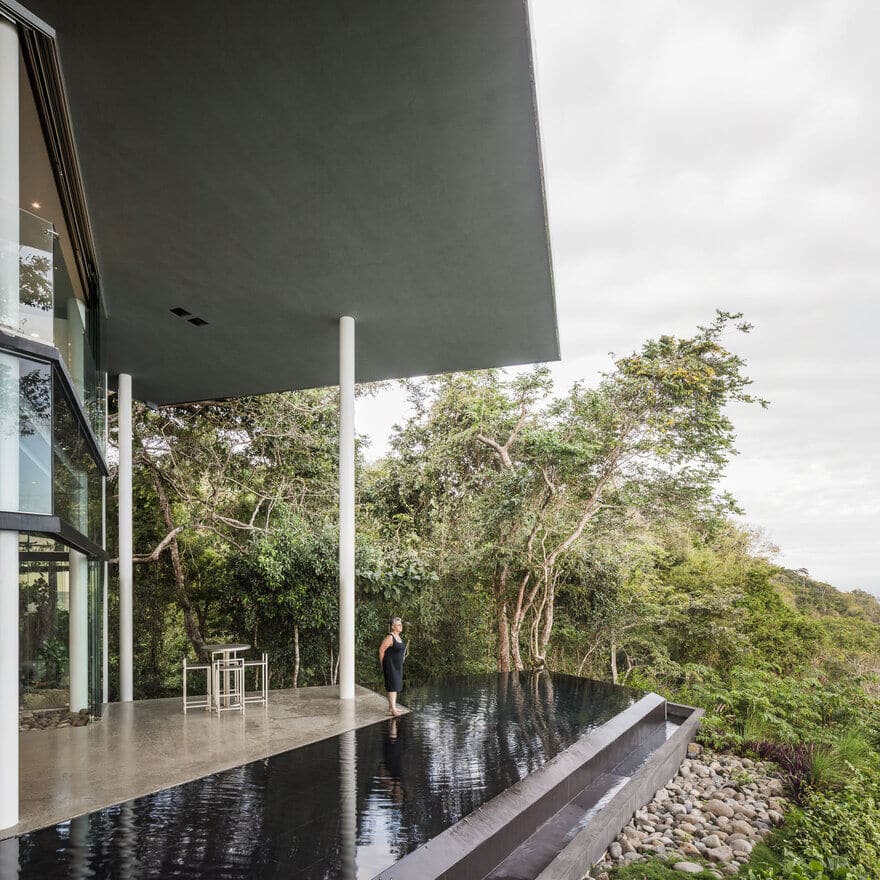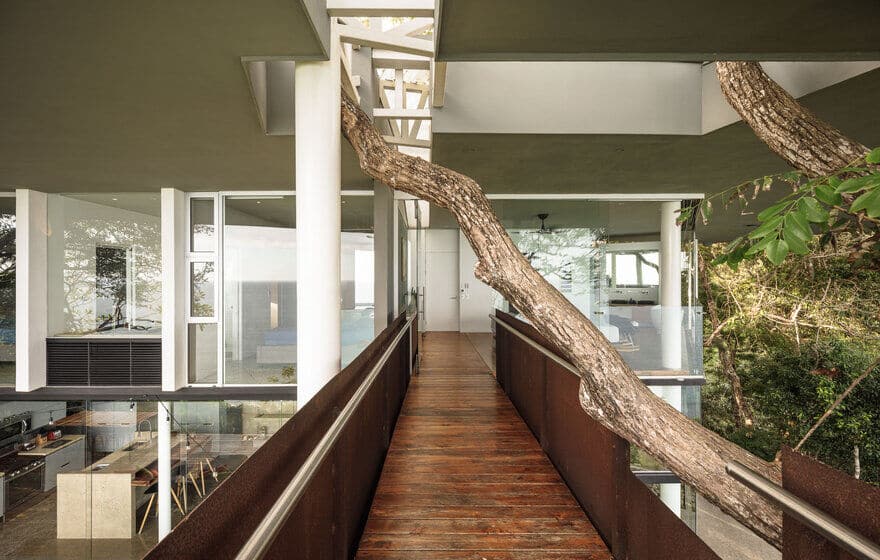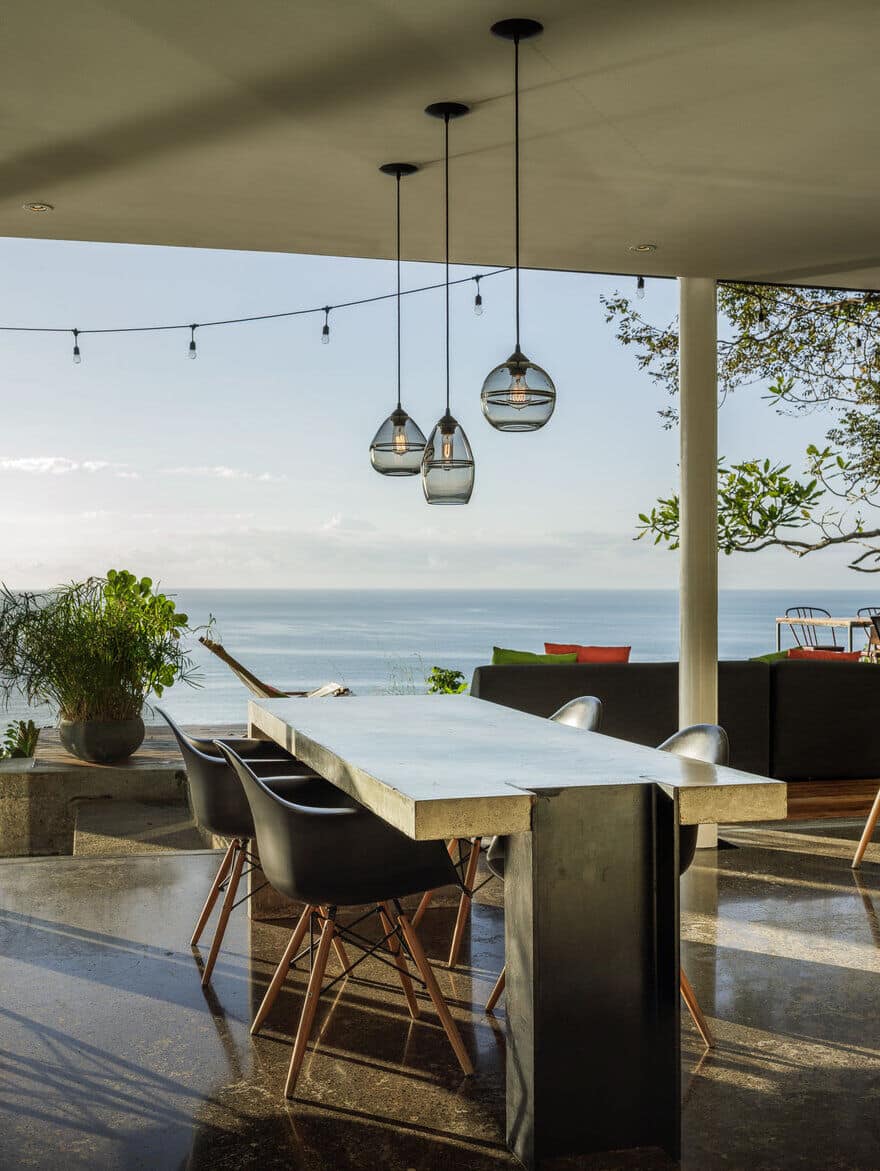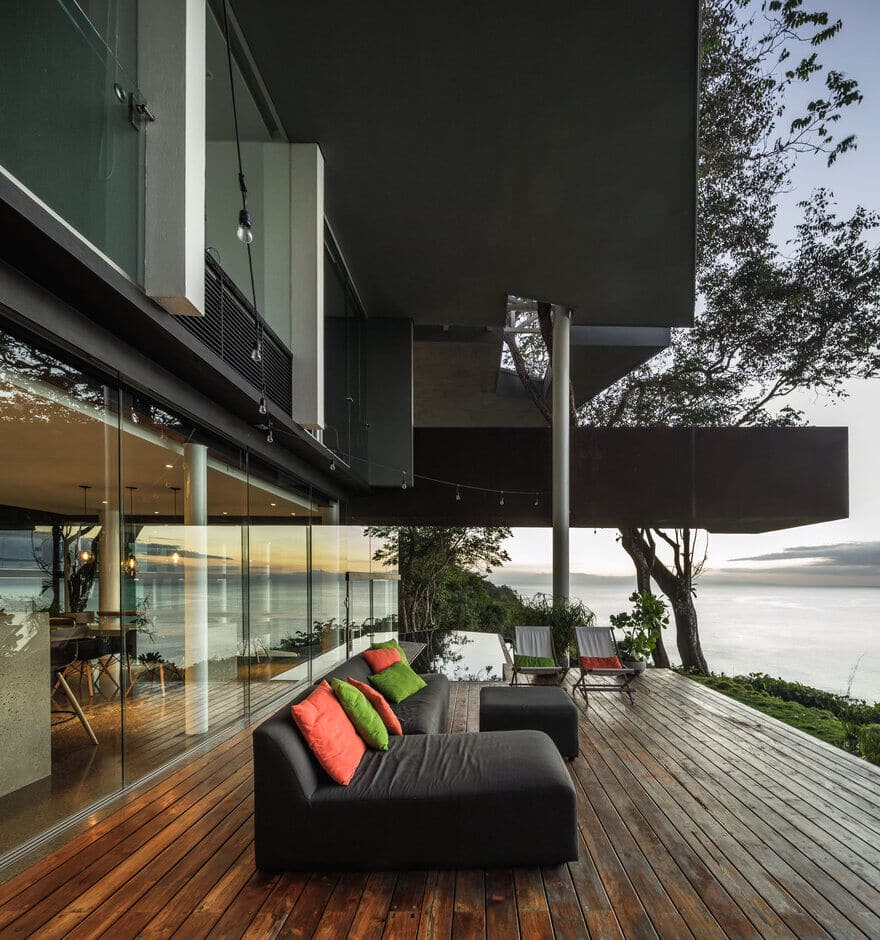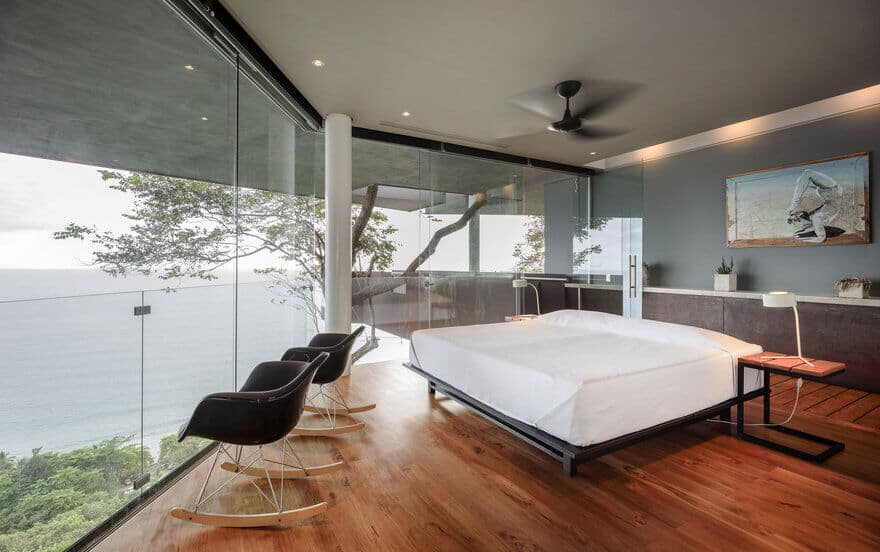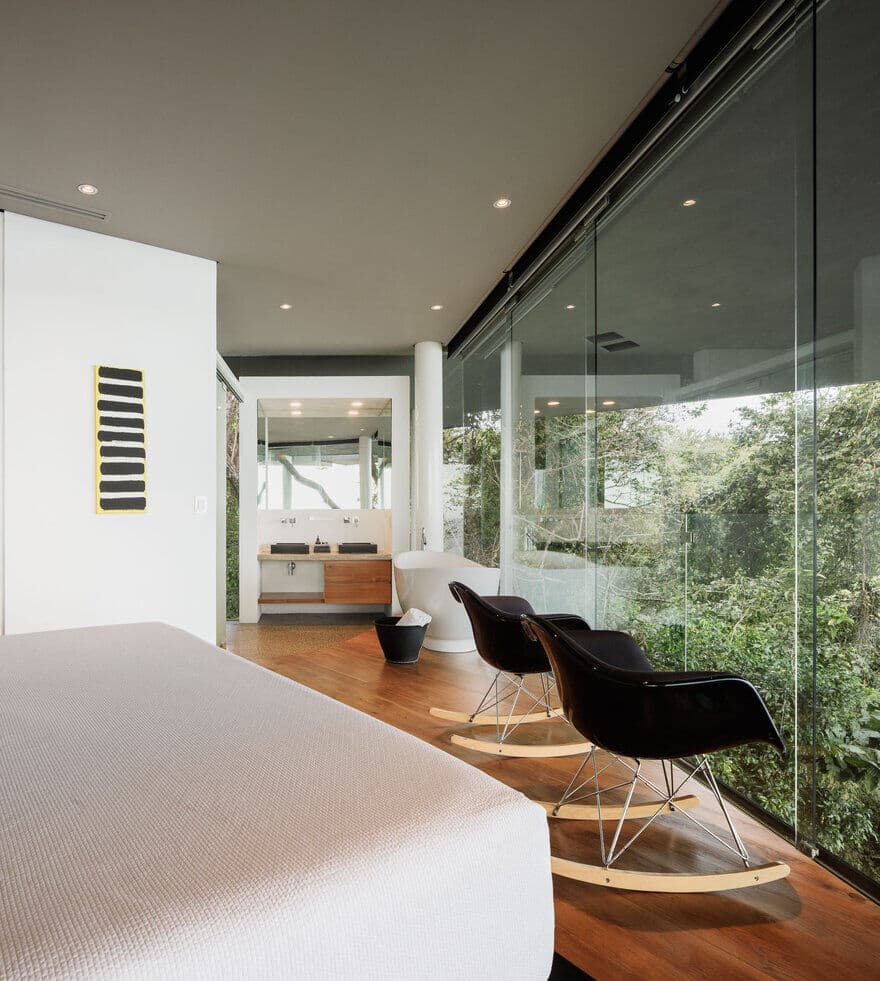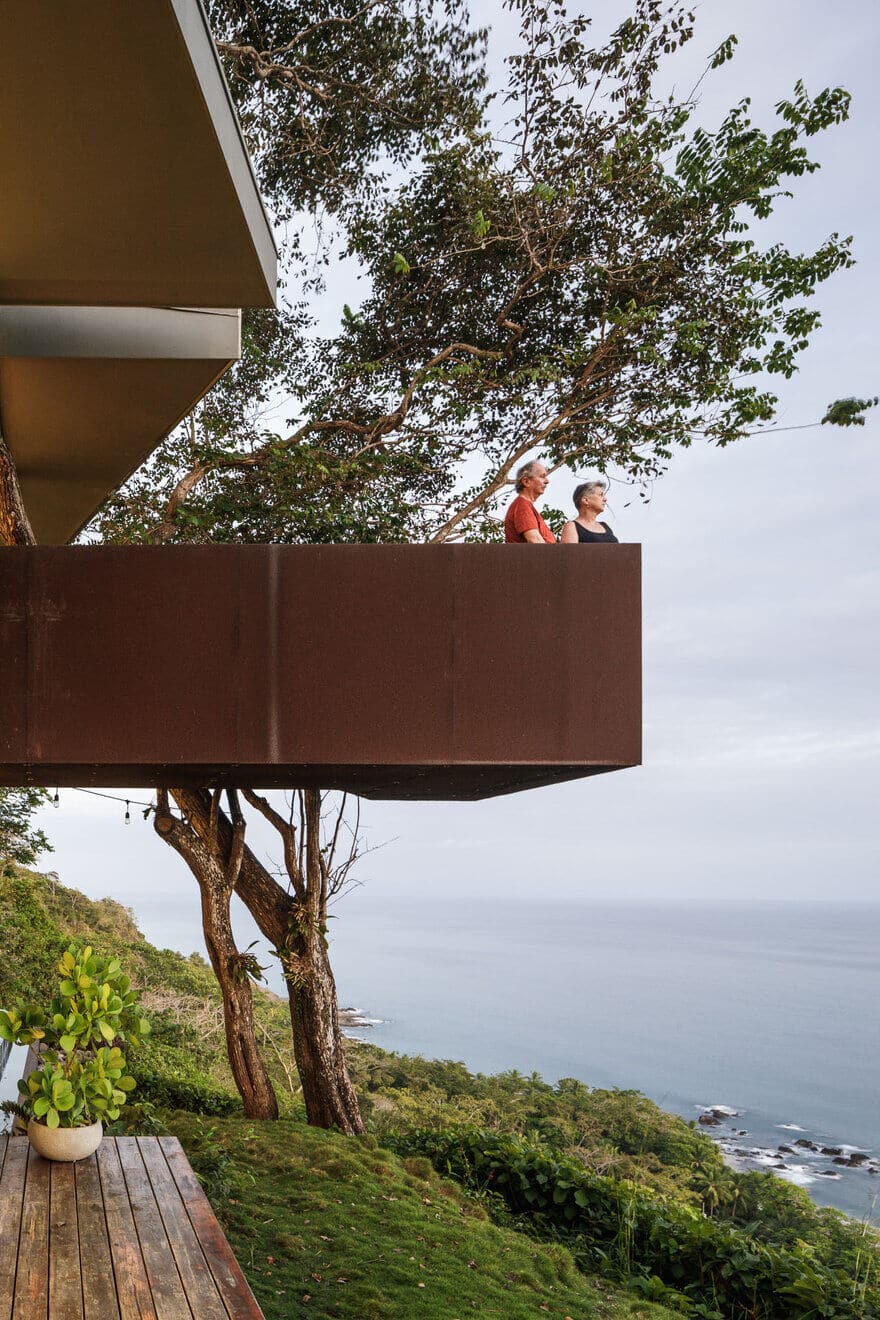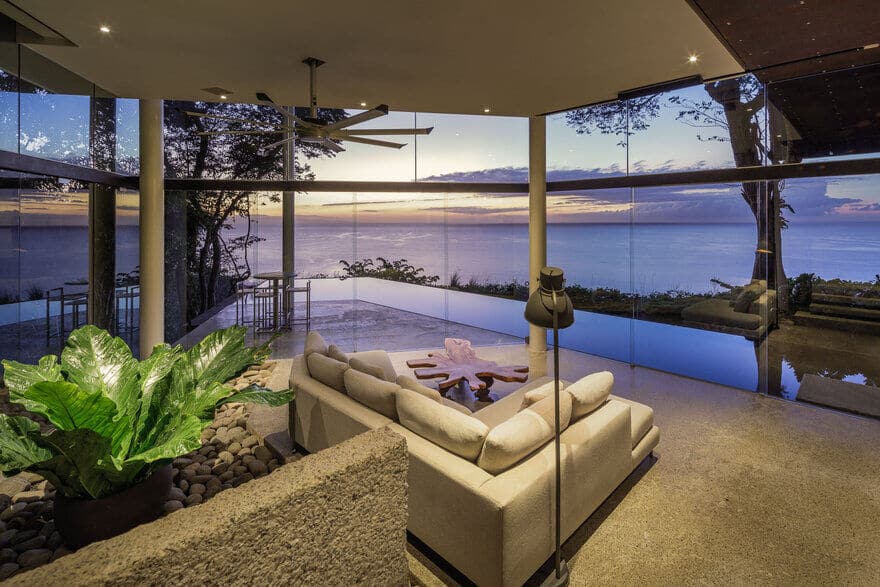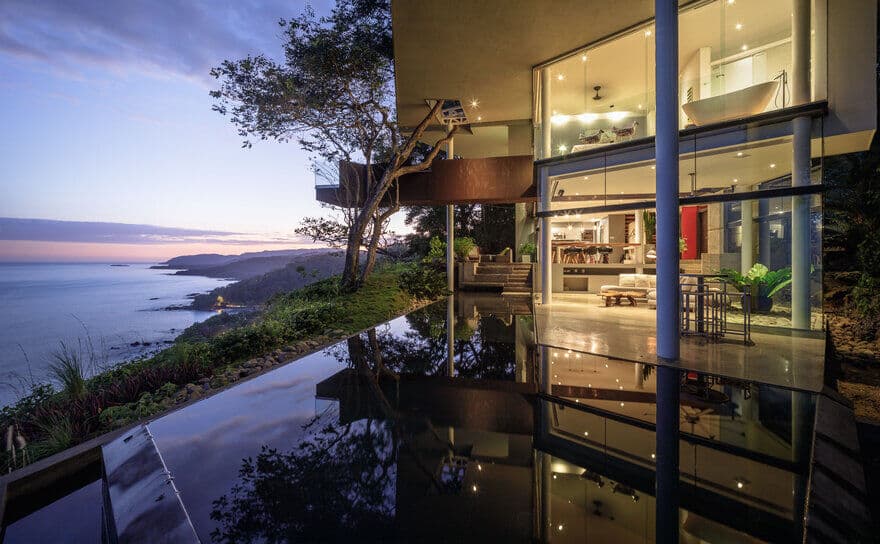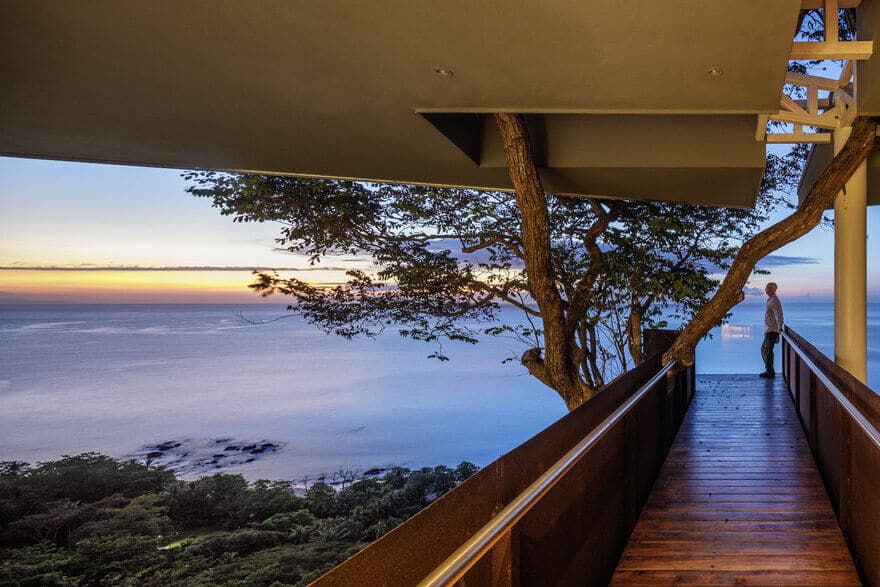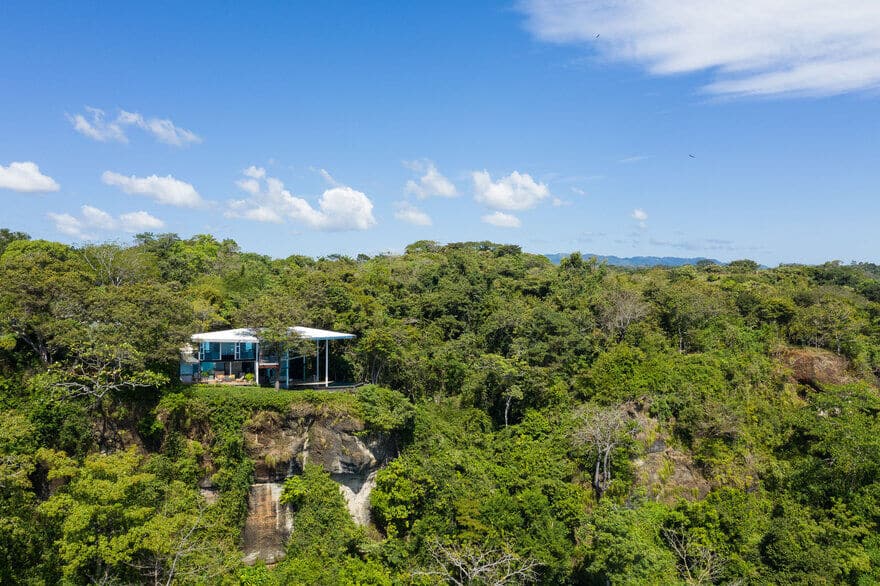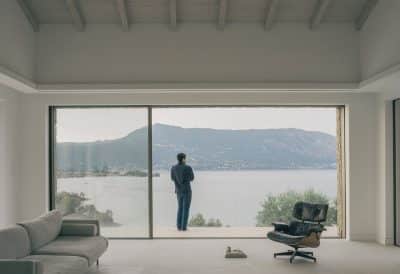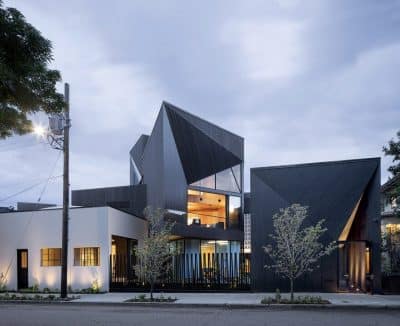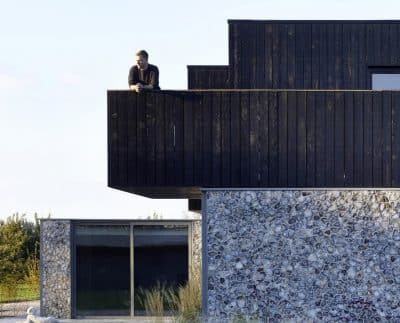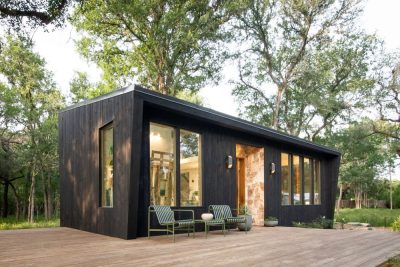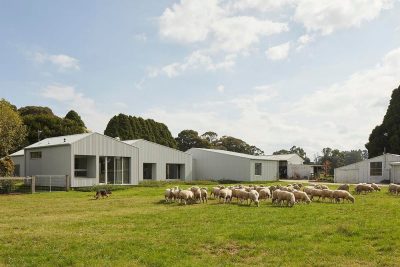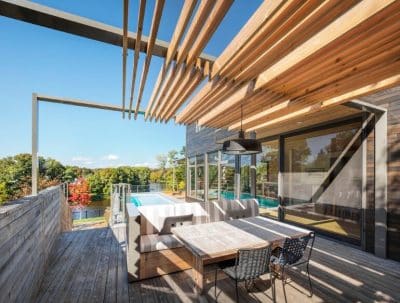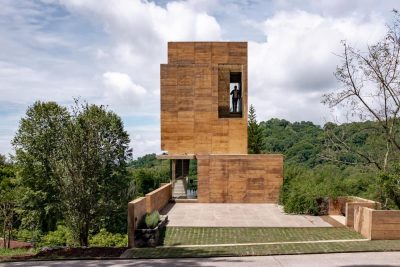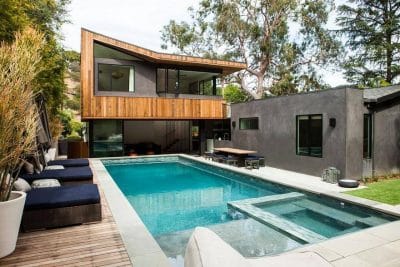Project: Cocobolo House
Architects: Cañas Arquitectos
Author: Arq. Victor Cañas
Design team: Arq. Sara Araya, Arq. Andrés Cañas, Arq. Ricardo Chaves
Location: Montezuma, Puntarenas, Costa Rica
Year 2016
Photographer: Arq.Victor Cañas, Livio Macchia
Description by Cañas Arquitectos: Perched on the edge of 40 meter high cliff looking out towards the ocean horizon and mainland to the southeast, sits Cocobolo House.
It is named after the trees that live on the forest and river canyon right next to the house.
It is beside this forest that you approach the house from the north, from which the view to the oceanic horizon is seen only partially through the vegetation and landscape.
It is ventilated passively, which makes the most use of the abundant cool breeze of the cliff, and lets you immerse yourself even more into the place.
You arrive a meter or so above the site, and descend into the niche between a hill and the forest into which the house is placed. Walking down wide fingered steps that grope into the ground you arrive at the entrance which is marked by a roughly textured concrete roof. The main door opens into a small hallway of double height. In front a low wall giving intimacy to the arrival and privacy to the rest of the Cocobolo house.
To the right – a hanging solid wooden staircase above a river stone garden that extends beyond the glass wall behind to the surrounding garden.
To the left a Cor-ten metal volume in the ceiling extends into the hallway and beckons in.
Beyond and down a few roughly textured concrete steps, you see the tall spaced living room whose floor extends out through frameless glass doors into a high terrace beyond. The terrace, in turn, extends out on two sides towards an infinity black pool and wet terrace with water at floor level, which act like a black water mirror that effectively mirrors the horizon and clouds beyond. This has the effect of visually wrapping the space with the ocean.
As you approach these stairs you ultimately arrive underneath the Cor-ten volume, which turns out to be a long meter wide line of the same metal that extends out toward the ocean, across and above the built-in concrete dining table, the terrace and Cocobolo tree beyond and then juts out over the cliff like a metal finger pointing to the horizon. This is the floor of the balcony that extends from the main bedroom above.
Beside the dining space is the kitchen, both open to a wide wooden terrace which has a water mirror at the edge of the cliff which also reflects the ocean. In this mirror is a fire pit. Above the kitchen and dining area are two bedrooms and a shared bathroom. Both face the ocean and this terrace. Behind the kitchen far wall is an office space, a small bathroom and pantry.
As you climb down into the living room, you see to the left, a forest, to the right and front- the ocean.
When you reach the terrace, you see that it has a double and a half height, and placed around this space, one on the terrace itself, and the other in the ground towards the forest, are two thin, high round white columns which hold up the large overhanging eaves of the roof. From here you see the finger balcony and cocobolo tree to the above right.
Atop the living room, is placed the main bedroom. From there you also see the beach line below. Beside the bedroom is the main bathroom, which faces the forest. It is from this bedroom that the finger balcony extends out from, in fact it it that which greets you when you enter.
Coming up from the hanging solid wooden staircase from the first floor, you walk beside the entrance to the two other bedrooms to your right. Pass beside the open space down to the entrance hall and a ventilating breezeway, and towards the end of the corridor, marked by the volume that you saw from the entrance hall, and a wooden floor which steps up, both which mark the entrance, to the main bedroom.
As you open the door to the main bedroom, you see another, smaller and longer Cor-ten wall, at handrail height, that starts immediately on your right, and continues outward with the wooden floor, along the length of the bedroom, through the glass door, and turns into the finger balcony. This finger balcony is a wooden pirate-plank like walkway that visually starts at the entrance of the bedroom, extends outside over the terrace below, passes beside a Cocobolo tree (which penetrates both the handrail and the roof), juts out from below the eave of the main roof, and ends with in a small open space, large enough for two chairs, with a glass rail that point out towards the ocean horizon and is placed above the 40 meter high void of granite cliff face and tropical green beach front.

